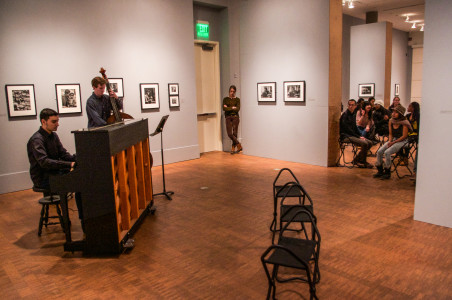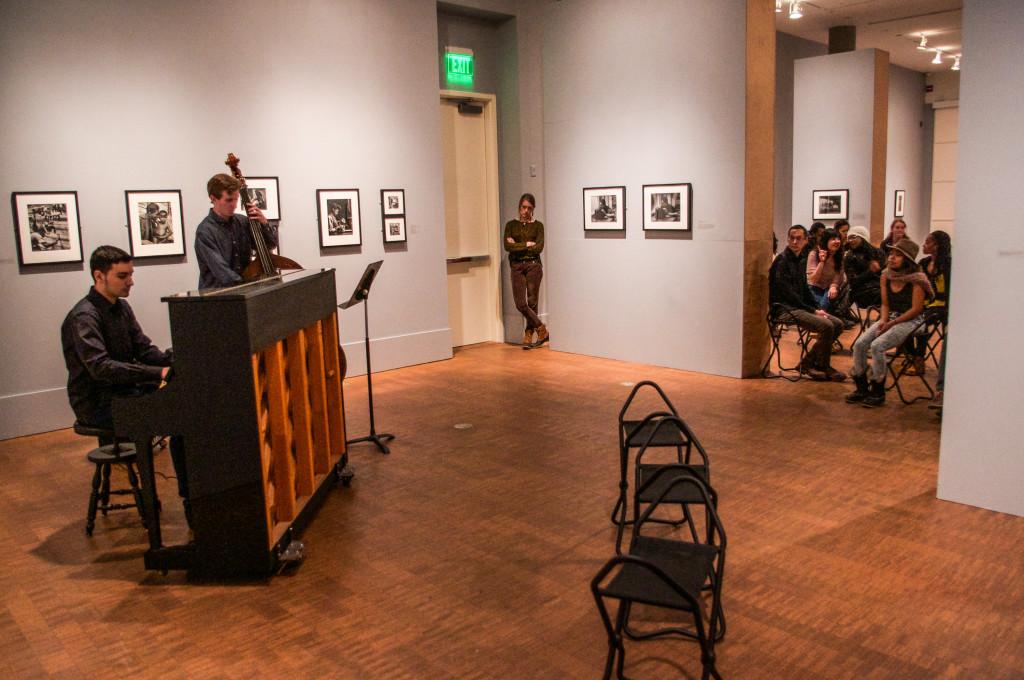By Lisa Oyolu
oyolulis17@grinnell.edu
On Thursday, Feb. 12, the American Studies Department, Faulconer Gallery, The Scarlet & Black and the Office of Intercultural Engagement and Leadership co-hosted the event, “An Experiment in Candid Talk about Race Categories, Racism and Racial Disparity” in the Faulconer Gallery.
The event was inspired by the recent Charlie Hebdo massacre and kosher supermarket killing in Paris, France, which raised questions about freedom of expression.
For Professor Katya Gibel Mevorach, Anthropology and American Studies, and one of the event organizers, these current issues place a strong emphasis on creating intentional spaces on Grinnell’s campus to discuss the freedom of expression.
Gibel Mevorach added that the high level of campus attendance and participation at Martin Luther King, Jr. Day events indicated an interest in continually having opportunities to engage in conversations about race.
“The origin of the idea was that we need to be opening up discussions about what the limits are in the community,” Gibel Mevorach said. “What does offensive mean? What is it to talk about racism without getting uncomfortable and becoming silent?”
Tilly Woodward, Curator of Academic and Community Outreach at the Falconer Gallery, said that she and Gibel Mevorach felt that the gallery was a fitting venue for Thursday’s conversation, since it could allow community members to engage with the “Gordon Parks: The Making of an Argument” photojournalism exhibition that is on display. The exhibit features the photos that Gordon Parks took for his first photographic essay in 1948 for Life magazine. The photos and the exhibit highlight themes of race and class.
“[Parks] helped get the country ready for important and significant social change,” Woodard said.
Gibel Mevorach hoped the event would spark conversation about global injustice and social change. She saw the event as an opportunity to consider the varied perspectives, life experiences and personal backgrounds within the Grinnell community. “We’re not saying, ‘Let’s talk about blacks and whites or about Group X and Group Y or limit it only to the United States’—that would be an error. Hopefully, the … lines between local and global will be blurred,” Gibel Mevorach said.
The goal of the experimental event was not for attendees to come away with a consensus about ideas regarding racial issues. Rather, the organizers wanted everyone present simply to exchange ideas through a lens where academic learning was examined alongside current events. Despite this, the event was not structured like a class discussion, nor was there a panel of speakers along with a question and answer period. Rather, the event was supposed to allow attendees to talk about dynamic topics through whichever medium they felt most comfortable.
“There are a lot of different ways to engage in conversation. It can be through photos, other artwork, reading, writing, reflecting or conversations with other people. When we’re able to have those conversations, change that is positive can happen. [It’s] when we’re not able to have those conversations that things say the same and that people become isolated,” Woodward said.
After the conversation began with a jazz number, attendees also discussed Charlie Hebdo magazine, media censorship as it pertains to Grinnell’s campus, how to enter into conversations about race and how to define words like offensive and racist.
Gibel Mevorach and Woodward said that they hope that Thursday’s talk was not the end of conversations about race on campus. They stated that they believe members of the Grinnell community continue to discuss the ways in which they see issues of race, racial categories and racial disparity presented within the personal and global contexts.
“The idea that we live in a bubble—we keep repeating it and hearing that expression, but it’s really not necessarily true,” Gibel Mevorach said.

Photo by Jeff Li.





























































